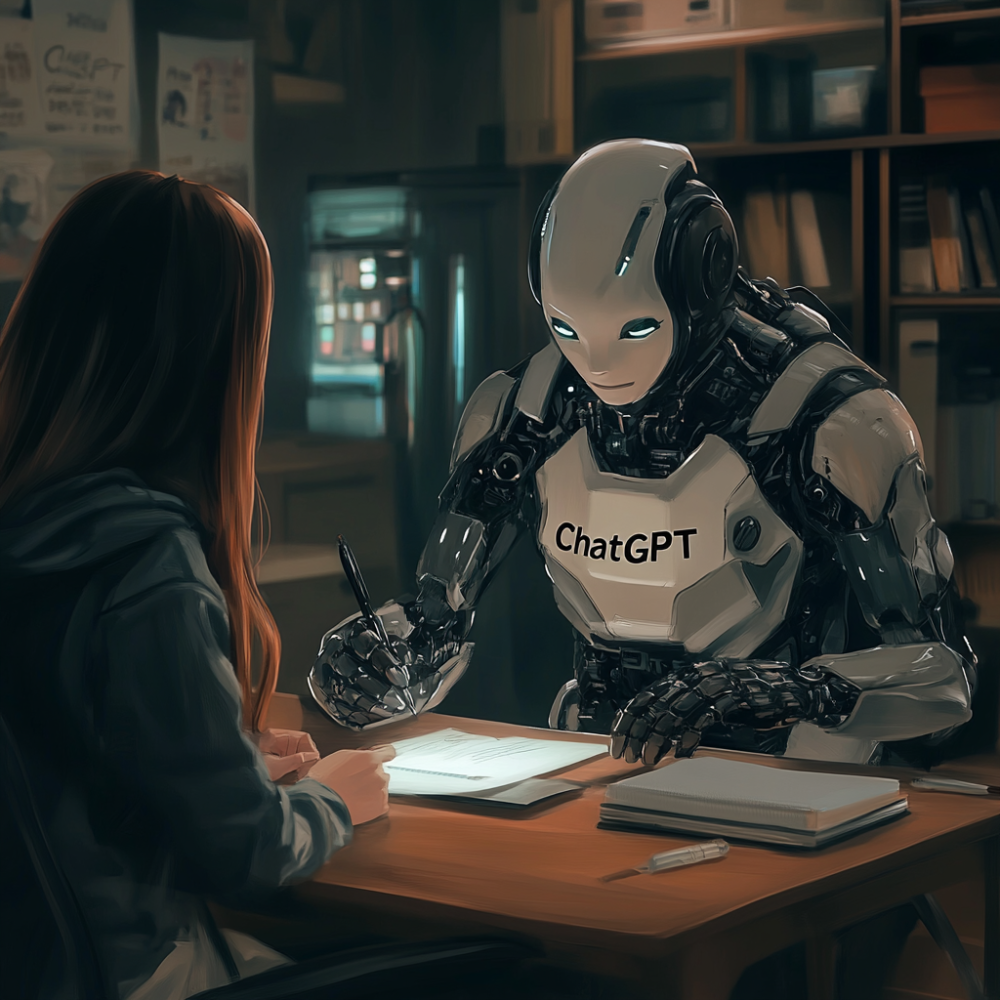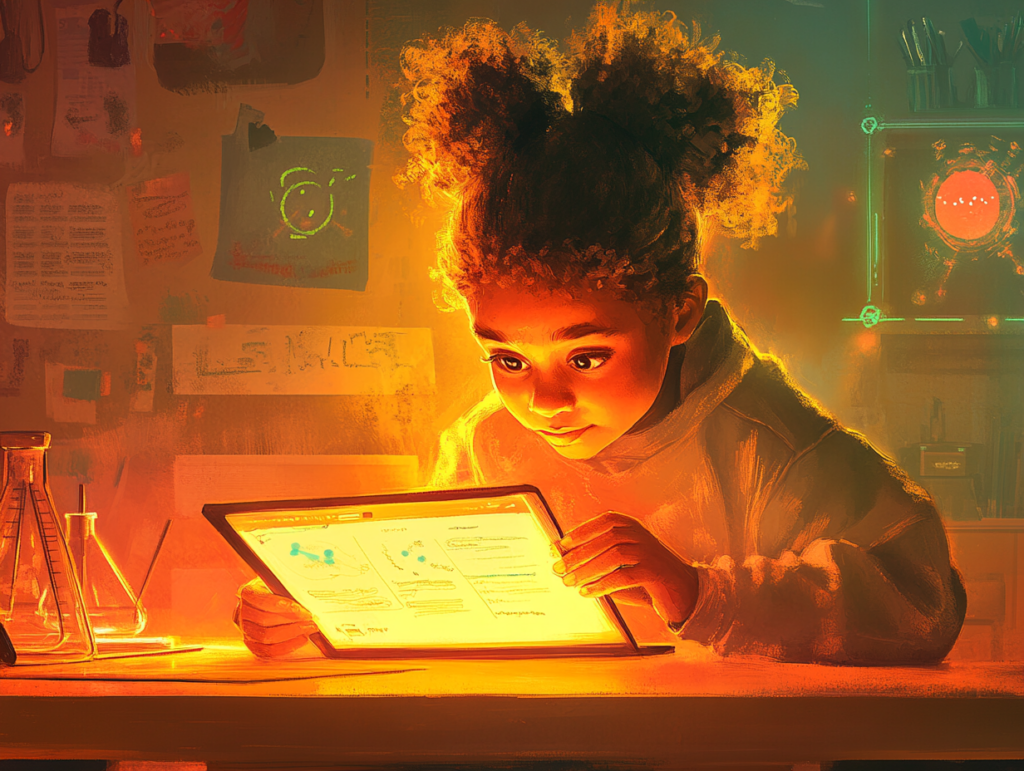Education is full of trends. Every year, there’s a new program, strategy, or technology that promises to change everything. Some ideas stick. Most don’t. Almost all add more work to a teacher’s already full plate.
AI isn’t just another trend.
This isn’t a passing phase or a buzzword that will fade when the next big thing comes along. AI is already here, evolving fast and reshaping the way students learn. Unlike other initiatives that pile onto teachers, AI has the potential to lighten the load—if we use it right.
That’s Where we Come in
Teachers can either take the lead in shaping how AI fits into education, or we can sit back and let people who don’t understand the classroom decide for us. That’s the real choice.
Anthony J. D’Angelo, founder of The Collegiate Empowerment Company, has spent his career helping educators and students navigate change and growth. His philosophy is simple. The most successful learners—at any age—are the ones who embrace change, not resist it.
He put it simply: “Become a student of change. It’s the only thing that remains constant.”
That’s exactly what AI demands of us.
We expect students to be lifelong learners. AI gives us a chance to model that ourselves. It’s not about replacing teachers—it’s about evolving with the tools we have. Ignoring it isn’t an option.AI
Won’t Replace Teachers, But It Will Change Teaching

AI isn’t taking our jobs. But it is reshaping them.
It can generate lesson plans, quizzes, summaries, and differentiated instruction in seconds. It can provide instant feedback, identify gaps in learning, and even analyze student progress faster than we ever could.
But AI isn’t the teacher. It doesn’t make judgment calls. It doesn’t adapt in real-time to an unexpected discussion. It doesn’t create relationships that motivate students to push harder.
That’s still our job.
The difference now is that we don’t have to waste our time on busy work. AI can take the tedious, time-consuming tasks off our plates so we can focus on what actually moves the needle.
But let’s be clear. AI isn’t just another grading tool or time-saver. It’s a new way of thinking about education. The more we engage with it, the more we see its potential.
So, the question isn’t whether AI will replace teachers. The question is how teachers can use AI to amplify what we already do best.
AI Isn’t the Problem, It’s an Opportunity to Rethink How We Teach

One of the biggest concerns about AI in education is cheating. It’s understandable. The idea that students can generate essays, solve equations, or summarize readings in seconds is enough to make any teacher worry.
But instead of seeing AI as a threat, what if we saw it as a tool that can push students to think more critically, analyze more deeply, and apply knowledge in ways they never have before?
AI can write an assignment in seconds—but that doesn’t mean the learning stops there. Instead of banning it, we should be asking, “How do we use it to push students beyond surface-level thinking?”
Here’s how:
- AI-generated lab reports can help students analyze errors, compare findings, and design their own experiments based on discrepancies in the data.
- AI-written essays can serve as models for students to critique, improve, and rewrite in a different voice or perspective—teaching them how to recognize bias, misinformation, and weak arguments.
- AI-created historical simulations can allow students to test alternative scenarios—what if Lincoln wasn’t assassinated? What if the Treaty of Versailles had been different?
- AI-powered economic models can help students predict stock market trends, analyze global trade, or even create their own investment strategies based on real-time AI projections.
- AI doesn’t stop thinking for students. It can make them think harder—if we design learning experiences that go beyond just asking for a completed product.
If we do this right, AI won’t weaken education. It will raise the bar.
Students won’t just be answering questions. They’ll be questioning answers.
AI in the Classroom: Practical Ways to Take Control

Use AI to Work Smarter, Not Harder
AI is a teacher’s assistant, not a replacement. Instead of fearing it, we should be using it to take tasks off our plates.
- Lesson planning – AI can generate engaging, standards-aligned lessons in seconds. Use it for inspiration, not as a final product.
- Personalized learning – AI can adjust materials for different reading levels, learning styles, or comprehension gaps.
- Instant feedback – AI-powered tools can provide immediate, detailed feedback on student writing, freeing up teachers for deeper instruction.
- Grading support – AI can help streamline grading for objective assignments, allowing teachers to focus on higher-order skills.
Teach AI Literacy
Students are using AI—whether we like it or not. Instead of blocking it, we should be teaching them how to use it responsibly.
- How to fact-check AI-generated content
- How to recognize AI bias and misinformation
- How to use AI as a tool, not a shortcut
- How to think critically about AI-produced work
If we don’t teach them how to use AI, they’ll figure it out on their own—without the guidance they need.
Lead the AI Conversation in Schools

Too many AI decisions in education are being made without teacher input. If we don’t step up, AI will be something that happens to us, not with us.
Here’s how we take the lead:
- Start discussions with colleagues about AI’s role in education—what’s working, what’s not, and how it should be implemented.
- Advocate for AI training for teachers—so we aren’t left behind in the tech conversation.
- Collaborate with administrators to develop AI guidelines that protect academic integrity without blocking innovation.
- Push back against AI policies that don’t reflect classroom realities—because if teachers aren’t in these conversations, someone else will make the decisions for us.
Teachers Need to Lead This Conversation
We’ve been here before. High-stakes testing started as a tool to measure progress. Then, it became the driver of instruction—stripping away creativity, forcing one-size-fits-all teaching, and turning classrooms into test prep factories.
AI has the potential to be high-stakes testing 2.0 if we’re not careful.
If we don’t step up now, AI won’t be a tool that helps students grow—it’ll be another system that dictates what and how we teach.
And we already know how that ends.
If we wait too long, AI will start shaping education without teachers at the table. It will redefine learning, assessment, and even student potential without students ever realizing what they’ve lost.
We can’t afford to be passive observers in this shift. We need to lead the conversation, not just be invited to it.
AI isn’t replacing teachers. But if we let others control how it’s implemented, it will replace our autonomy.
We need to step up, speak up, and shape AI into a tool that works for students.
